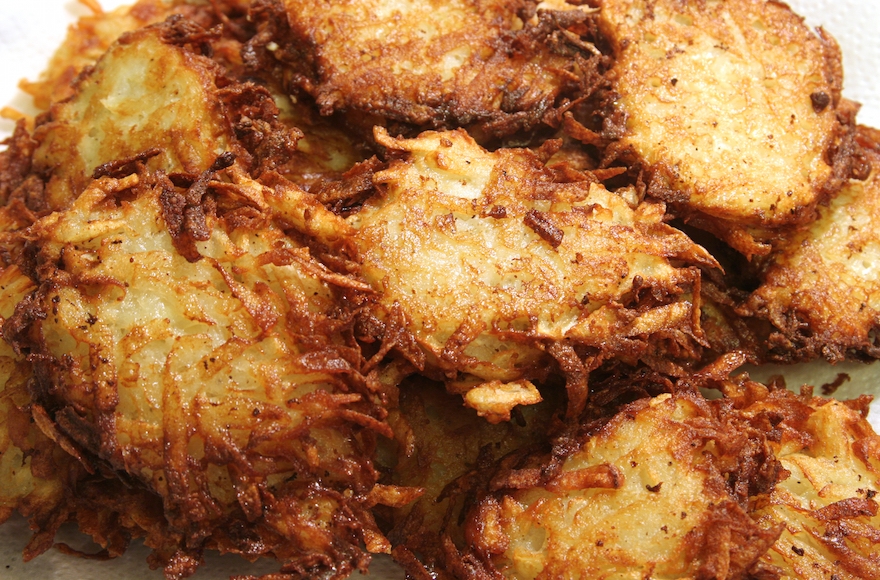The latke is one of those Jewish foods that feels steeped in tradition, as if it’s been made the same way since the days of the Maccabees.
But in a revelatory article, Atlantic senior editor Yoni Appelbaum explains that the latke as we know it — grated potatoes fried in olive oil — is a relatively new culinary invention. Here, in brief, is the Hanukkah staple’s origin story.
Warning: This timeline may be upsetting to traditionalist latke lovers.
As early as the 14th century: Deep-fried ricotta cheese
That’s right. Latkes were originally an Italian cheese dish.
According to Appelbaum, they were inspired by The Book of Judith, set hundreds of years before the Maccabean Revolt. The book, from the Catholic Bible, tells the story of a daring widow who seduced and killed the Assyrian general Holofernes to save Israel from invaders.
In an obscure Hebrew version of the story, Judith distracted Holofernes in part by feeding him pancakes “salted and mixed with cheese.” Italian Jews adopted the custom of deep-frying cheese pancakes on Hanukkah to honor the story, which they apparently conflated with that of the Maccabees.
Up to the 19th century: Grain pancakes
Appelbaum notes that potatoes were originally cultivated in South America and weren’t introduced to Europe by Spanish explorers until the second half of the 16th century. Potatoes weren’t widely grown and consumed in Eastern Europe — the Old World from which many Jews emigrated to the United States — for a couple more centuries.
Until the early 19th century, Eastern European Jews made pancakes from grains, such as buckwheat and rye, according to food historian Gil Marks. Those were among the few crops available to them during the frosty early winter, when Hanukkah is celebrated.
The 19th century: Potatoes fried in schmaltz, not oil
In the 1800s, even after potatoes took root in Eastern Europe, latkes were still not fried in olive oil (as they are today, providing a convenient link to the oil-rich story of Hanukkah). Olive trees were uncommon in the region, and people cooked with schmaltz, fat rendered from chickens, geese or beef.
In fact, schmaltz remained a traditional latke ingredient well into the 20th century. Appelbaum cites a stipulation from a 1927 issue of The American Mercury magazine (which he says includes the first mention of the word “latke” in English) that the potato pancakes be “fried in schmaltz.”
From the 20th century: Today’s latke — potatoes fried in oil
The advent in 1911 of Crisco, the first shortening made entirely of vegetable oil, changed the way latkes (and many other fried foods) were made. Kosher, Crisco was once marketed as the miracle for which the “Hebrew race had been waiting 4,000 years.”
When Crisco “fell from favor,” as Appelbaum writes, olive oil took its place at the Hanukkah table — and the modern latke was born.
“So what’s a latke?” asks Appelbaum.
Simple: “It’s a shredded Andean tuber, fried like a buckwheat pancake, which was substituted for Italian cheeses, once eaten to honor a mistaken reading of obscure variants of an apocryphal text.”
But it’s cool if you want to keep making the oil connection.
JTA has documented Jewish history in real-time for over a century. Keep our journalism strong by joining us in supporting independent, award-winning reporting.






